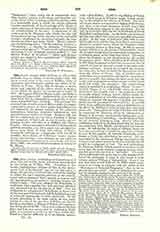

Odo, Saint, second Abbot of Cluny, b. 878 or 879, probably near Le Mans; d. November 18, 942. He spent several years at the court of William, Duke of Aquitaine, and afterwards entered the Abbey of St. Martin at Tours. About 909, he became a monk, priest, and superior of the abbey school in Baume, whose Abbot, Bl. Berno, was transferred to Cluny in 910. He became Abbot of Baume in 924, and Berno‘s successor at Cluny in 927. Authorized by a privilege of John XI in 931, he reformed the monasteries in Aquitaine, northern France, and Italy. The privilege empowered him to unite several abbeys under his super-vision and to receive at Cluny monks from abbeys not yet reformed; the greater number of the reformed monasteries, however, remained independent, and several became centers of reform. Between 936 and 942 he visited Italy several times, founding in Rome the monastery of Our Lady on the Aventine and reforming several convents, e.g. Subiaco and Monte Cassino. He was sometimes entrusted with important political missions, e.g., when peace was arranged between King Hugo of Italy and Alberic of Rome. Among his writings are: a biography of St. Gerald of Aurillac, three books of Collationes (moral essays, severe and forceful), a few sermons, an epic poem on the Redemption (Occupatio) in seven books (ed. Swoboda, 1900), and twelve choral antiphons in honor of St. Martin.
KLEMENS LOFFLER

